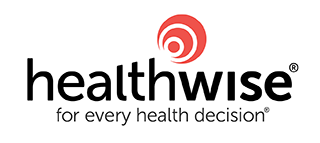Check Your Symptoms
Overview
A hip problem can be hard to deal with, both for the child who has the problem and for the parent or caregiver. A child who has a hip problem may feel pain in the hip, groin, thigh, or knee. A child in pain may limp or be unable or unwilling to stand, walk, or move the affected leg. A baby in pain may cry, be fussy, and have other signs of pain. Hip problems may be present at birth (congenital). Or they may develop from injury, overuse, inflammation, infection, or tumour growth.
To better understand hip problems, it may be helpful to know how the hip works. It's the largest ball-and-socket joint in the body. The thigh bone (femur) fits tightly into a cup-shaped socket (acetabulum) in the pelvis. The hip joint is tighter and more stable than the shoulder joint, but it doesn't move as freely. The hip joint is held together by muscles in the buttock, groin, and spine; tendons; ligaments; and a joint capsule. Several fluid-filled sacs (bursae) cushion and lubricate the hip joint and let the tendons and muscles glide and move smoothly. The largest nerve in the body (sciatic nerve) passes through the pelvis into the leg.
Hip problems
Hip problems may develop from overuse, infection, or a problem that was present from birth (congenital). Oddly enough, a child who has a hip problem often feels pain in the knee or thigh instead of the hip. Hip problems that affect children include:
- An inflammatory reaction, such as transient or toxic synovitis. This often occurs after the child has had a cold or other upper respiratory infection. It's the most common cause of hip pain in children.
- A slipped capital femoral epiphysis. This occurs when the upper end of the thigh bone (head of the femur) slips at the growth plate (epiphysis) and doesn't fit in the hip socket correctly.
- Legg-Calve-Perthes disease. It's a disorder of the head of the femur. It's caused by decreased blood flow to this area.
- An inward twisting of the thigh bone (femoral anteversion). This condition causes the knees and feet to turn inward. The child will look "pigeon-toed" and may have a clumsy walk.
- Developmental dysplasia of the hip (DDH). It's caused by a problem in the development of the hip joint. The top of the femur doesn't fit correctly into the hip socket (acetabulum). The femur can partly or completely slip out of the socket.
- Juvenile idiopathic arthritis (JIA). It causes inflamed, swollen joints that are often stiff and painful.
- Infection in the joint (septic arthritis), the bursa (septic bursitis), or the hip or pelvic bone (osteomyelitis).
- In rare cases, cancer of the bone, such as osteosarcoma.
Treatment may include first aid and using a brace, cast, harness, or traction. It may also include physiotherapy and medicines. In some cases, surgery is needed. Treatment for a hip problem depends on:
- The location and type of injury, and how bad it is.
- The child's age, general health, and activity level.
Check Your Symptoms
The medical assessment of symptoms is based on the body parts you have.
- If you are transgender or non-binary, choose the sex that matches the body parts (such as ovaries, testes, prostate, breasts, penis, or vagina) you now have in the area where you are having symptoms.
- If your symptoms aren’t related to those organs, you can choose the gender you identify with.
- If you have some organs of both sexes, you may need to go through this triage tool twice (once as "male" and once as "female"). This will make sure that the tool asks the right questions for you.
Many things can affect how your body responds to a symptom and what kind of care you may need. These include:
- Your age. Babies and older adults tend to get sicker quicker.
- Your overall health. If you have a condition such as diabetes, HIV, cancer, or heart disease, you may need to pay closer attention to certain symptoms and seek care sooner.
- Medicines you take. Certain medicines, such as blood thinners (anticoagulants), medicines that suppress the immune system like steroids or chemotherapy, or natural health products can cause symptoms or make them worse.
- Recent health events, such as surgery or injury. These kinds of events can cause symptoms afterwards or make them more serious.
- Your health habits and lifestyle, such as eating and exercise habits, smoking, alcohol or drug use, sexual history, and travel.
Try Home Treatment
You have answered all the questions. Based on your answers, you may be able to take care of this problem at home.
- Try home treatment to relieve the symptoms.
- Call your doctor if symptoms get worse or you have any concerns (for example, if symptoms are not getting better as you would expect). You may need care sooner.
Pain in children 3 years and older
- Severe pain (8 to 10): The pain is so bad that the child can't stand it for more than a few hours, can't sleep, and can't do anything else except focus on the pain. No one can tolerate severe pain for more than a few hours.
- Moderate pain (5 to 7): The pain is bad enough to disrupt the child's normal activities and sleep, but the child can tolerate it for hours or days.
- Mild pain (1 to 4): The child notices and may complain of the pain, but it is not bad enough to disrupt his or her sleep or activities.
Pain in children under 3 years
It can be hard to tell how much pain a baby or toddler is in.
- Severe pain (8 to 10): The pain is so bad that the baby cannot sleep, cannot get comfortable, and cries constantly no matter what you do. The baby may kick, make fists, or grimace.
- Moderate pain (5 to 7): The baby is very fussy, clings to you a lot, and may have trouble sleeping but responds when you try to comfort him or her.
- Mild pain (1 to 4): The baby is a little fussy and clings to you a little but responds when you try to comfort him or her.
Symptoms of infection may include:
- Increased pain, swelling, warmth, or redness in or around the area.
- Red streaks leading from the area.
- Pus draining from the area.
- A fever.
Certain health conditions and medicines weaken the immune system's ability to fight off infection and illness. Some examples in children are:
- Diseases such as diabetes, cystic fibrosis, sickle cell disease, and congenital heart disease.
- Steroid medicines, which are used to treat a variety of conditions.
- Medicines taken after organ transplant.
- Chemotherapy and radiation therapy for cancer.
- Not having a spleen.
If there is a difference between the child's hips, you may notice that:
- One leg looks shorter than the other.
- There are more folds of skin on the inside of one thigh than on the other.
- One hip joint seems to move differently than the other.
Seek Care Now
Based on your answers, you may need care right away. The problem is likely to get worse without medical care.
- Call your doctor now to discuss the symptoms and arrange for care.
- If you cannot reach your doctor or you don't have one, seek care in the next hour.
- You do not need to call an ambulance unless:
- You cannot travel safely either by driving yourself or by having someone else drive you.
- You are in an area where heavy traffic or other problems may slow you down.
Seek Care Today
Based on your answers, you may need care soon. The problem probably will not get better without medical care.
- Call your doctor today to discuss the symptoms and arrange for care.
- If you cannot reach your doctor or you don't have one, seek care today.
- If it is evening, watch the symptoms and seek care in the morning.
- If the symptoms get worse, seek care sooner.
Make an Appointment
Based on your answers, the problem may not improve without medical care.
- Make an appointment to see your doctor in the next 1 to 2 weeks.
- If appropriate, try home treatment while you are waiting for the appointment.
- If symptoms get worse or you have any concerns, call your doctor. You may need care sooner.
Self-Care
Try the following tips to help relieve your child's hip pain, swelling, and stiffness. If your child becomes upset or won't co-operate, don't force your child.
- Rest.
Have your child rest and protect the affected hip. Have your child stop, change, or take a break from any activity that may be causing pain or soreness.
- For sleep, put your child on the side that doesn't have a problem.
- Avoid things that might increase swelling.
For 48 hours, don't let your child do things that might increase swelling. These things include taking hot showers, using hot tubs, and using hot packs.
- Apply heat.
After 48 to 72 hours, if swelling is gone, you can put heat on your child's hip. Moist heat with a hot water bottle or warm towel may feel good to your child.
- Resume normal activities.
After 48 to 72 hours, if swelling is gone, your child can carefully do their normal activities.
- Rub the area.
Gently massage or rub your child's hip to relieve pain and encourage blood flow. Don't massage the affected area if it causes pain.
When to call for help during self-care
Call a doctor if any of the following occur during self-care at home:
- New pain or swelling.
- New signs of infection, such as redness, warmth, or a fever.
- New numbness, tingling, or weakness.
- New pale, white, blue, or cold skin.
- Trouble bearing weight on the hip.
- Symptoms occur more often or are more severe.
Learn more
Over-the-counter medicines
- Acetaminophen
- Non-steroidal Anti-Inflammatory Drugs (NSAIDs)
- Quick Tips: Safely Giving Over-the-Counter Medicines to Children
More self-care
Preparing For Your Appointment
You can help your doctor diagnose and treat your condition by being prepared for your appointment.
Related Information
Credits
Current as of: November 9, 2022
Author: Healthwise Staff
Medical Review:
William H. Blahd Jr. MD, FACEP - Emergency Medicine
Adam Husney MD - Family Medicine
Kathleen Romito MD - Family Medicine
Current as of: November 9, 2022
Author: Healthwise Staff
Medical Review:William H. Blahd Jr. MD, FACEP - Emergency Medicine & Adam Husney MD - Family Medicine & Kathleen Romito MD - Family Medicine


